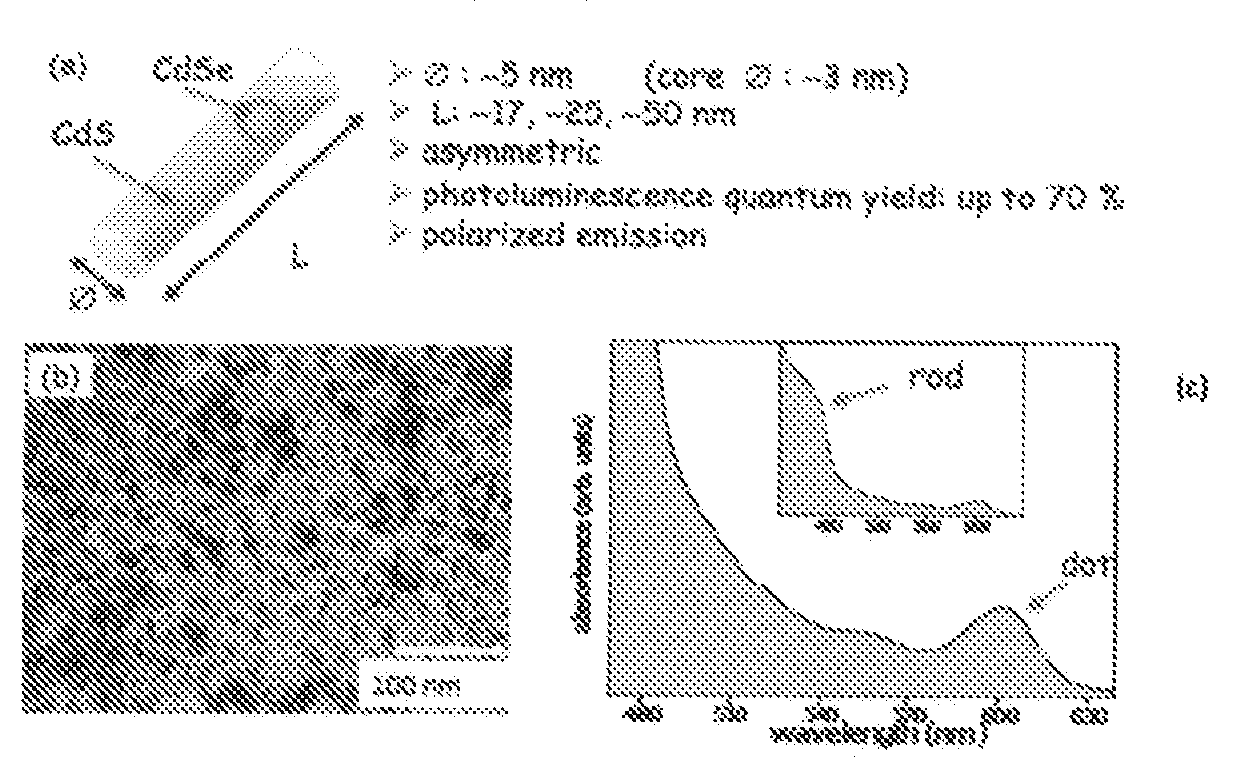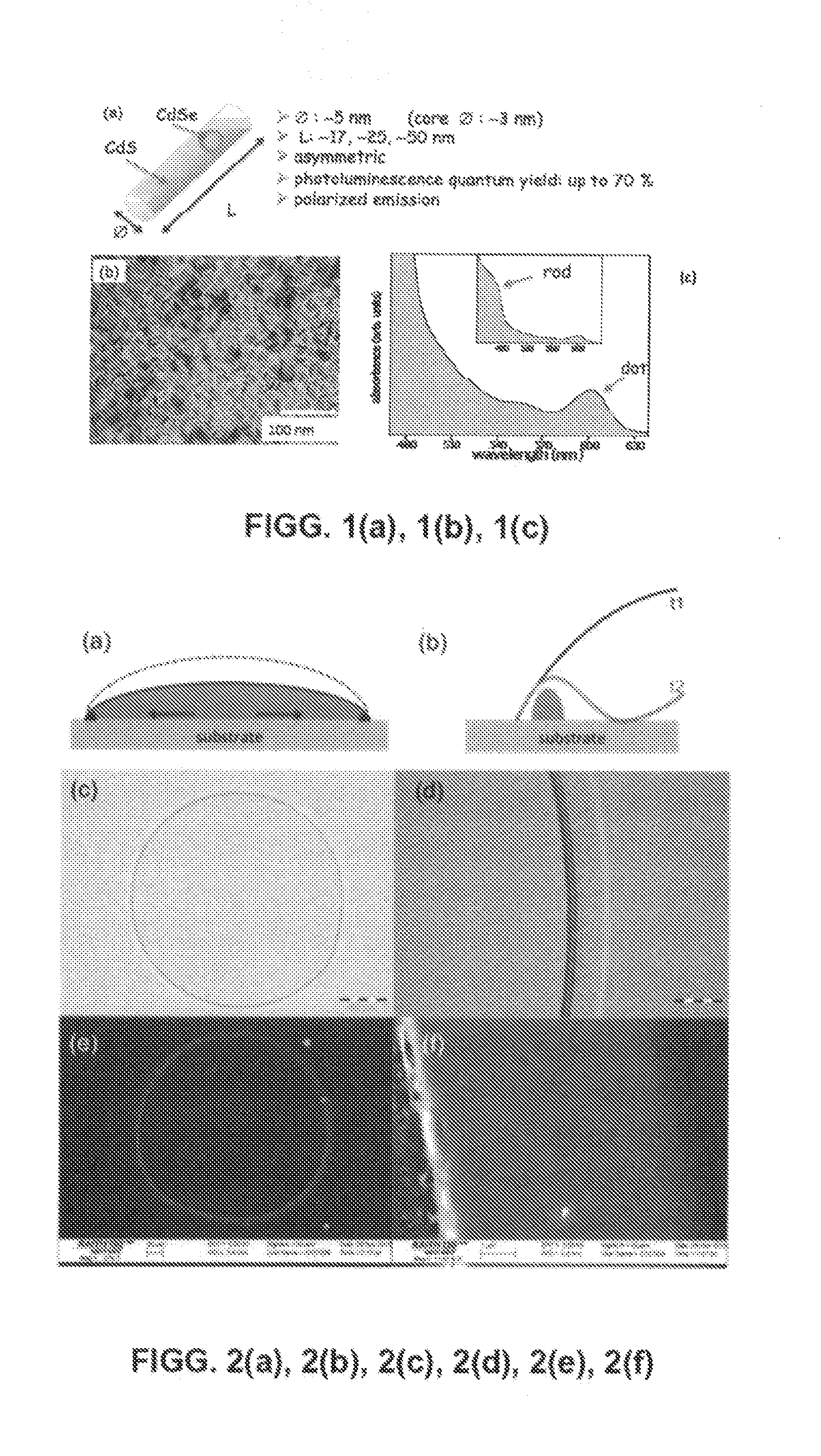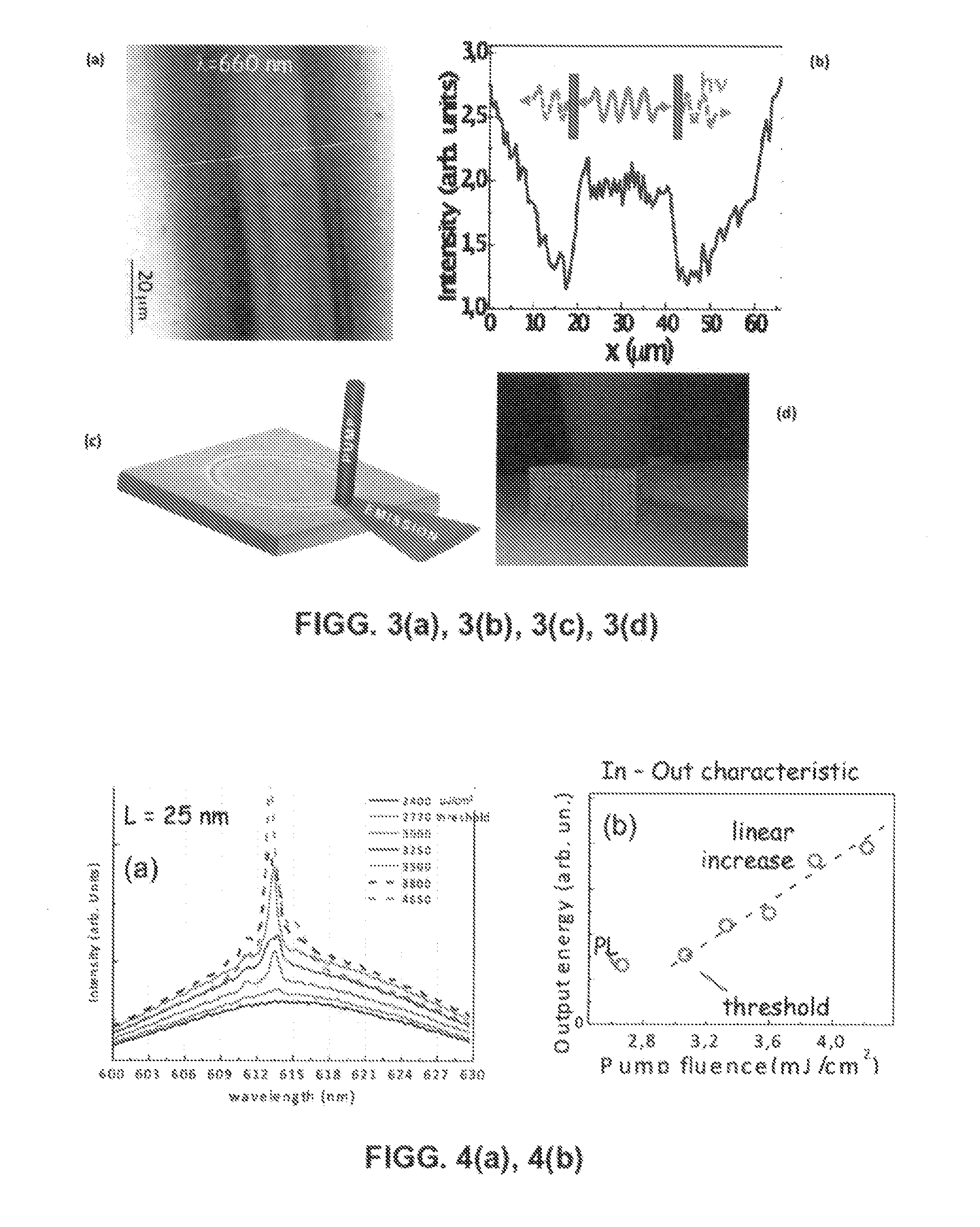Fabrication of lasing microcavities consisting of highly luminescent colloidal nanocrystals
a technology of colloidal nanocrystals and micro-cavities, which is applied in the direction of active medium materials, semiconductor lasers, crystal growth processes, etc., can solve the problems of difficult lasering, shortened excited state lifetime to tens of picoseconds, and difficult to achieve optical gain in colloidal semiconductor nanocrystals
- Summary
- Abstract
- Description
- Claims
- Application Information
AI Technical Summary
Benefits of technology
Problems solved by technology
Method used
Image
Examples
Embodiment Construction
Experimental Section
[0043]Colloidal core-shell CdSe / CdS nanorods were obtained by the seeded growth method, published by L. Carbone et al. in Nano Letters, 2007, 7, 2942-2950. The obtained nanorods, which are soluble in toluene in a concentration of 1-3 μM, exhibit both high fluorescent quantum yields (up to 70%) and linear polarized emission. The emission wavelength of the nanorods is in the range of 600-630 nm, but can in principle be controlled over a spectral window from 570 nm to 650 nm.
[0044]The nanorods were dissolved in toluene at a concentration of 10−6 M. The obtained solution was jet-deposited by means of a capillary with 20 μm diameter on a previously cleaned glass slide (cleaning by 20 min ultrasonic in acetone and 20 min ultrasonic in propanol, and low dry by nitrogen). The jet-deposition was performed using a Femtojet (Eppendorf) system combined with an inverted optical microscope. The capillary-glass slide distance was adjusted to some hundreds of microns, which corr...
PUM
| Property | Measurement | Unit |
|---|---|---|
| volume | aaaaa | aaaaa |
| volume | aaaaa | aaaaa |
| length | aaaaa | aaaaa |
Abstract
Description
Claims
Application Information
 Login to View More
Login to View More - R&D
- Intellectual Property
- Life Sciences
- Materials
- Tech Scout
- Unparalleled Data Quality
- Higher Quality Content
- 60% Fewer Hallucinations
Browse by: Latest US Patents, China's latest patents, Technical Efficacy Thesaurus, Application Domain, Technology Topic, Popular Technical Reports.
© 2025 PatSnap. All rights reserved.Legal|Privacy policy|Modern Slavery Act Transparency Statement|Sitemap|About US| Contact US: help@patsnap.com



